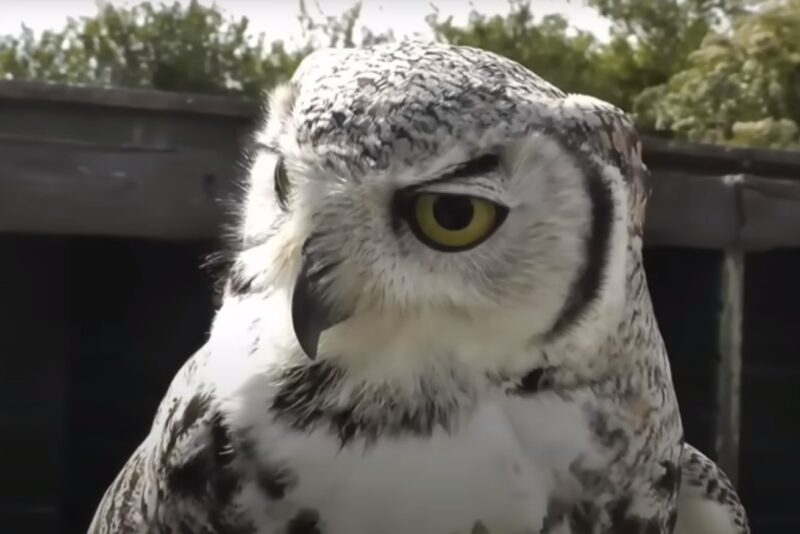Birds in North America are often admired for their beauty and the sense of freedom they embody. However, beneath the feathers and flight, some of these creatures harbor capabilities that can be surprisingly dangerous.
From the majestic bald eagle to the unassuming Canada goose, the avian world is replete with species that, under certain conditions, can pose risks to humans and other animals.
This article delves into the lives of the 10 most dangerous birds of North America, shedding light on their behaviors and the reasons behind their occasional aggression.
Key Takeaway
1. Bald Eagle

The Bald Eagle, a symbol of strength and freedom in the United States, possesses formidable hunting skills and a commanding presence.
With talons capable of exerting over 400 pounds of pressure per square inch, they can cause serious injuries.
“Bald eagles are powerful birds with strong talons, and they can be quite defensive of their nests and territories.” – Dr. Laurie Goodrich, Sutton Avian Research Center’s Assistant Unit Leader
Although human attacks are rare, eagles have been known to swoop down on pets and small animals, sometimes in areas frequented by people.
Their nests, massive structures built high in trees or cliffs, are fiercely defended against all perceived threats.
Did you know that Bald eagles can spot fish from several hundred feet above the water, showcasing their incredible eyesight?
2. Great Horned Owl

Great Horned Owls are among the most powerful owls in North America, equipped with strong talons and a silent flight.
They are known to defend their young aggressively, and there have been reports of attacks on humans who venture too close to their nests.
Their nocturnal nature means that encounters are rare, but when they occur, they can be startling and potentially harmful.
These owls adapt well to various environments, making them common across the continent.
“Great Horned Owls have a gripping strength of around 300 pounds per square inch, making their talons formidable weapons.”
3. Red-tailed Hawk
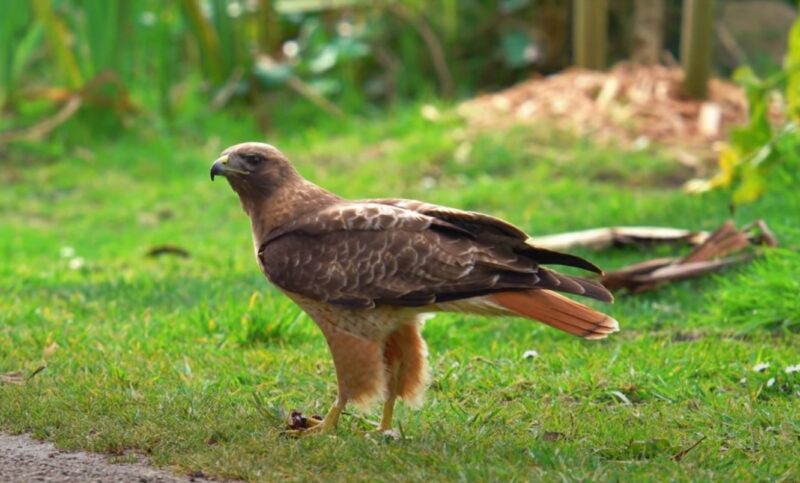
Red-tailed Hawks are widespread in North America, recognized by their distinctive red tail and broad wings. These birds of prey are protective of their territory, especially during nesting season, and have been known to dive-bomb humans who get too close. They are also considered as one of the largest birds of North America!
While their attacks are usually warnings, they can cause injuries with their sharp talons.
Red-tailed Hawks play a crucial role in controlling rodent populations, making them valuable ecosystem members.
“Red-tailed hawks are territorial and protective, especially during the breeding season, and they have been known to dive-bomb humans who get too close to their nests.” – Dr. Jean-Francois Therrien, a senior research scientist at Hawk Mountain Sanctuary
4. Canada Goose
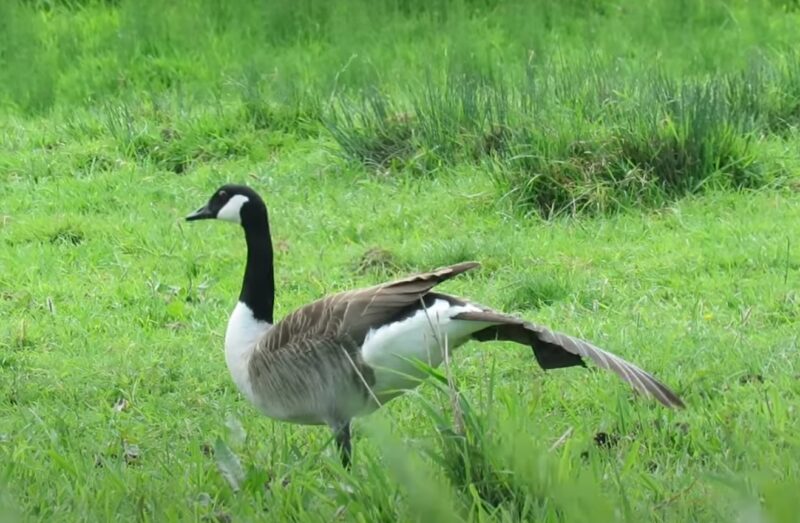
Canada Geese are a familiar sight in parks and waterways, known for their honking and migratory V-formations. During breeding season, they can become unexpectedly aggressive, chasing and attacking humans who stray too close to their nests.
Did you know that Canada Geese can migrate thousands of miles, flying at speeds of up to 60 miles per hour?
Their size and speed can make these encounters quite intimidating. Despite this, Canada Geese are highly social birds, demonstrating complex behaviors and strong family bonds.
“Canada geese are generally peaceful birds, but they can become aggressive during the breeding season when they’re defending their nests and young.” – Dr. Erica Miller, a wildlife biologist and founder of Northwest Wildlife Rehabilitation.
5. Snowy Owl
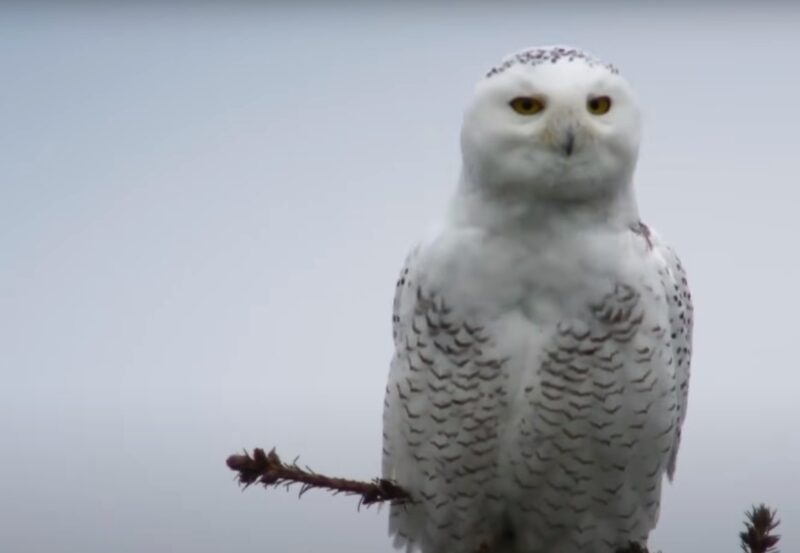
The Snowy Owl, with its stunning white plumage, is a sight to behold in the northern parts of North America. These owls are fierce predators, hunting during the day unlike many other owl species.
They have been known to show aggression towards humans when food is scarce or if their young are threatened.
Snowy Owls are among the few bird species that can thrive in the Arctic’s harsh conditions.
“Snowy Owls can consume up to 1,600 lemmings a year, highlighting their role as predators in their ecosystem.”
6. American Crow
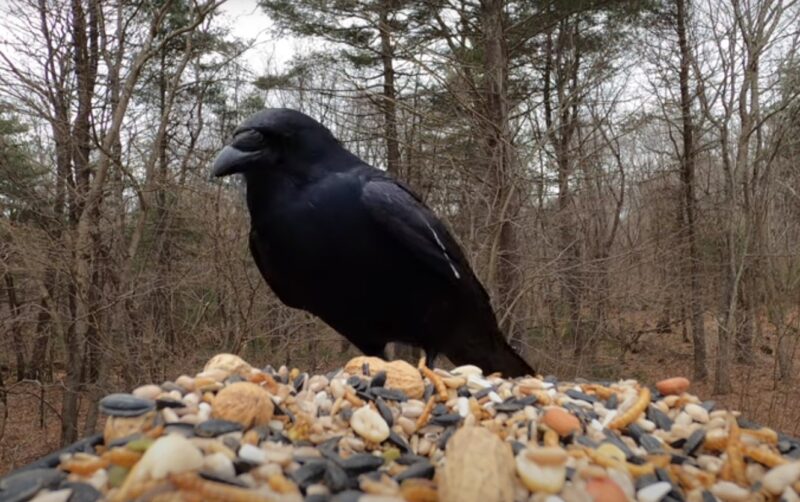
American Crows are highly intelligent birds, capable of using tools and solving complex problems. They are protective of their territory and have been observed attacking humans and pets to defend their nests.
Crows are social creatures, often seen gathering in large numbers, which can be intimidating when they decide to mob a perceived threat. Despite their occasional aggression, crows play a significant role in cleaning up carrion and waste.
7. Barred Owl

Barred Owls are known for their distinctive “Who cooks for you?” call and are found in dense forests across North America. They have occasionally shown aggression towards humans, particularly joggers and hikers who venture close to their nesting sites. These incidents, while rare, highlight the owl’s strong protective instincts. Barred Owls are primarily nocturnal, hunting for small animals and insects at night.
“Barred Owls are highly adaptable and have been expanding their range into new habitats, which can have significant impacts on local ecosystems and other owl species.” – Dr. Eric Forsman, retired US Forest Service wildlife biologist and author of “The Barred Owl: A Comprehensive Natural History”
8. Peregrine Falcon
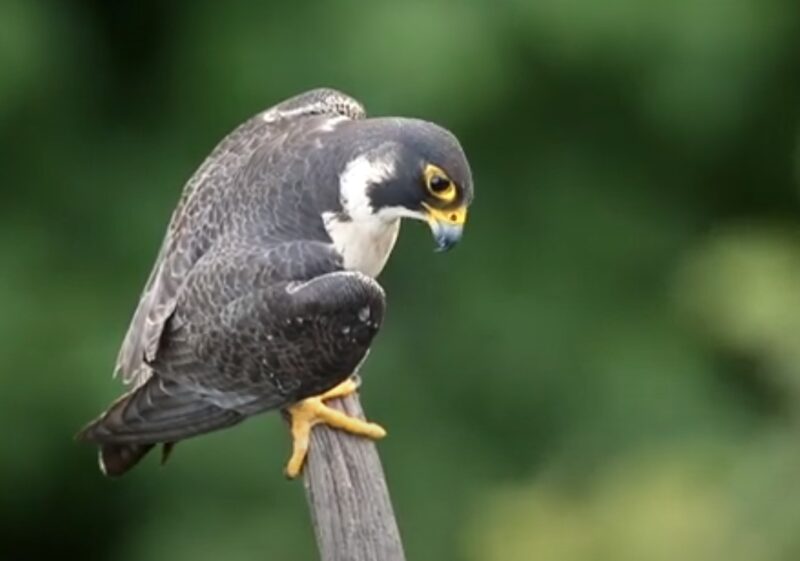
Peregrine Falcons, the fastest birds in the world, can reach speeds over 200 miles per hour during their hunting stoop.
While they generally do not pose a direct threat to humans, there have been instances where falcons defending their nests have attacked.
“The Peregrine Falcon is an incredible bird, capable of reaching speeds over 200 miles per hour during its hunting stoop, making it the fastest bird in the world.” – Dr. Tom Cade, founder of The Peregrine Fund.
Their incredible speed and aerial agility make them master hunters, capable of catching mid-sized birds in flight. Urban areas have become unlikely habitats for these falcons, where they nest on tall buildings.
“Did you know that Peregrine Falcons have been used in falconry for over 3,000 years, admired for their speed and hunting prowess.”
9. Turkey Vulture
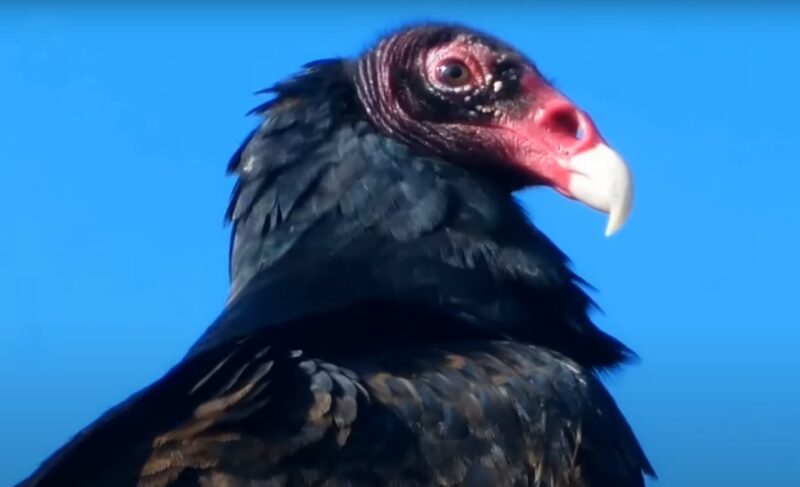
Turkey Vultures, often seen circling overhead, are scavengers that play a vital role in the ecosystem by cleaning up dead animals.
They are not typically aggressive towards humans but can regurgitate a foul-smelling substance to deter predators or threats.
While their appearance can be unsettling, they are harmless and avoid human contact. Turkey Vultures have a keen sense of smell, unusual for birds, which they use to locate carrion.
“Turkey vultures are nature’s cleanup crew, and their role in the ecosystem is incredibly important.” – Dr. Keith L. Bildstein, Sarkis Acopian Director of Conservation Science at Hawk Mountain Sanctuary.
10. Northern Harrier
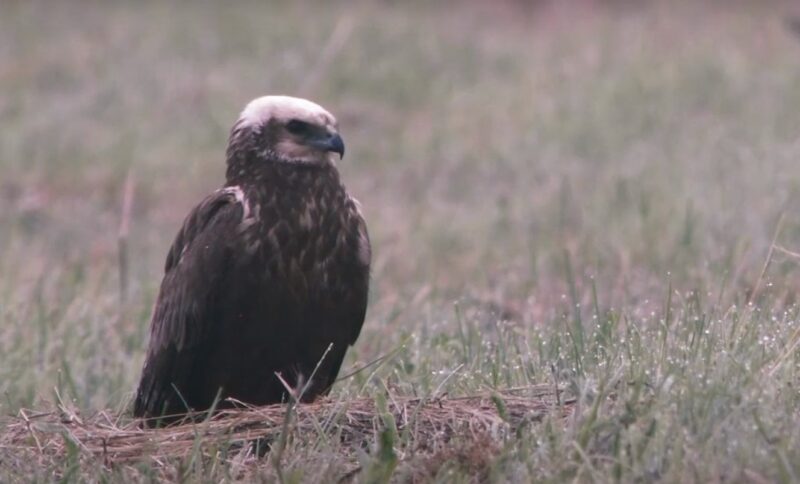
Northern Harriers are medium-sized raptors that glide low over fields and marshes, hunting for small mammals and birds. They are known for their distinctive face, resembling that of an owl, which helps them hear prey.
While not commonly aggressive towards humans, they can become defensive if their ground-level nests are threatened.
Northern Harriers are one of the few raptor species where the males are noticeably smaller than the females.
“Northern Harriers have an owl-like facial disc that helps them hear rodents moving underground while they fly.”
| Bird Species | When attack? | How attack? | How It Ends? |
|---|---|---|---|
| Bald Eagle | Breeding season or when defending territory | Swooping down, using powerful talons | Human retreats or eagle successfully defends territory |
| Great Horned Owl | When defending nest or young | Silent flight, attacking with strong talons | Human retreats or owl perceives threat is over |
| Red-tailed Hawk | Breeding season or when defending territory | Dive-bombing, using sharp talons | Human retreats or hawk successfully defends territory |
| Canada Goose | Breeding season or when defending nest | Chasing, hissing, and biting | Human retreats or goose perceives threat is over |
| Snowy Owl | When food is scarce or defending young | Using powerful talons to attack | Human retreats or owl perceives threat is over |
| American Crow | When defending territory or nest | Mobbing, pecking, and dive-bombing | Human retreats or crow perceives threat is over |
| Barred Owl | When defending nest or young | Attacking with talons, usually targeting the head | Human retreats or owl perceives threat is over |
| Peregrine Falcon | When defending nest or young | High-speed dives, attacking with talons | Human retreats or falcon perceives threat is over |
| Turkey Vulture | When threatened or cornered | Regurgitating foul-smelling substance, hissing | Human retreats or vulture successfully defends itself |
| Northern Harrier | When defending ground-level nest | Dive-bombing, using sharp talons | Human retreats or harrier successfully defends nest |
The most dangerous bird in world
The cassowary is usually considered to be the world’s most dangerous bird, at least where humans are concerned, although ostriches and emus can also be dangerous. Cassowary (Queensland, Australia).
This bird cannot fly, but they are incredible jumpers and can launch themselves up to 7 feet off the ground
They are known for their powerful legs and strong kicks, which they can use for defense or to escape from predators. The strength of a cassowary kick can vary, but it is estimated that a cassowary can deliver a forceful kick with the power of up to 1,000 pounds per square inch.
In 2019, a 75-year-old man died after being attacked by a cassowary on his farm in Florida. The man, who owned the bird, fell and was kicked repeatedly by the cassowary, resulting in fatal injuries.
While cassowaries are not native to North America, they are sometimes kept in zoos or by private collectors, and this incident serves as a reminder of the potential dangers posed by these large, flightless birds.
“Cassowaries, and ratites in general, are considered pretty close living relatives of certain avian dinosaurs,” said Ana Frace, Zoological Manager.
Watch out: Rooster can kill!
Even a rooster isn’t on the list, this bird can kill.
Rooster attacks are relatively rare, and fatalities are even rarer.
However, roosters can be aggressive, particularly during mating season or when defending their territory. Here are some facts about rooster attacks and their potential dangers:
An Irish man Jasper Kraus in California, who had a heart condition, died on 28 April 2022. after being mauled by an “aggressive” Brahma chicken living on his property.
Fatal attacks by birds in North America are extremely rare, but they still happen.
Most bird species, including those on the list of most dangerous birds, generally do not pose a significant threat to humans and are more likely to avoid human contact when possible.
Always respect wildlife and a safe distance ensures the safety of both humans and these magnificent birds.
Related Posts:
- 18 Largest Birds Of North America - How They Survive…
- 15 Wildest Apex Predators: Nature's Nightmare
- What Are the Predators of Eagles? -Surprising…
- Are Opossums Dangerous to Humans? Unmasking the Truth!
- Are Opossums Dangerous to Pets? - How to Deal With Them
- 11 Largest Whales of North America: Unveiling the…


